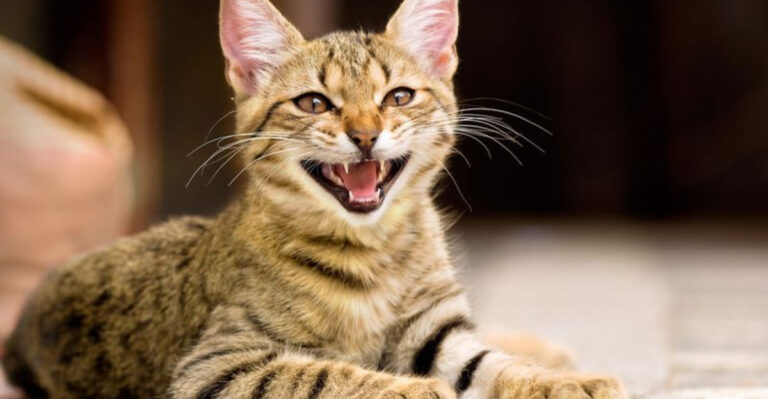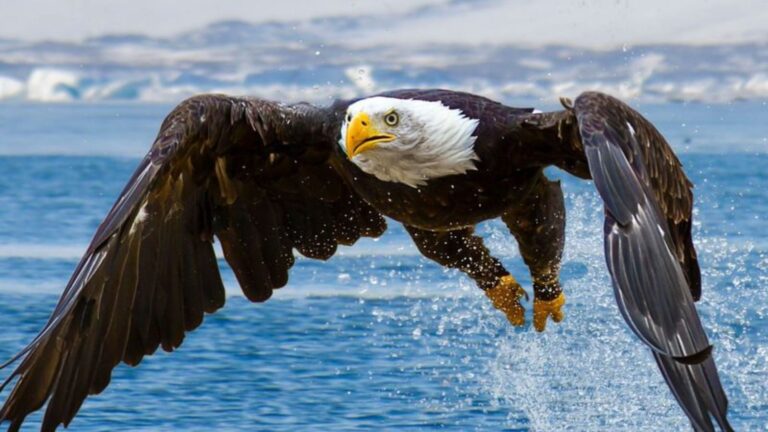13 Most Dangerous Reptiles In America You Should Know About
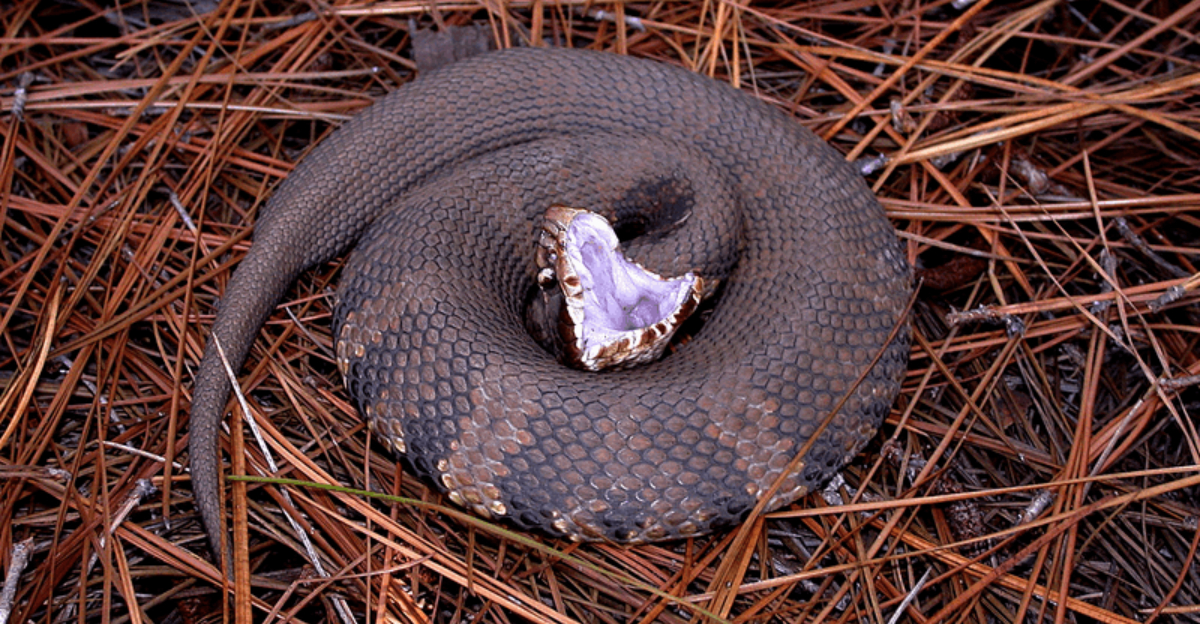
Reptiles are some of the most fascinating, yet dangerous creatures on Earth. From venomous snakes to massive crocodiles, many species in America command respect due to their ability to strike fear into the hearts of even the most experienced wildlife enthusiasts.
Some of these reptiles may appear calm or even docile at first glance, but don’t let their appearance fool you. Many of them possess powerful venom, sharp claws, or sheer size that make them formidable opponents in the wild.
1. Western Diamondback Rattlesnake
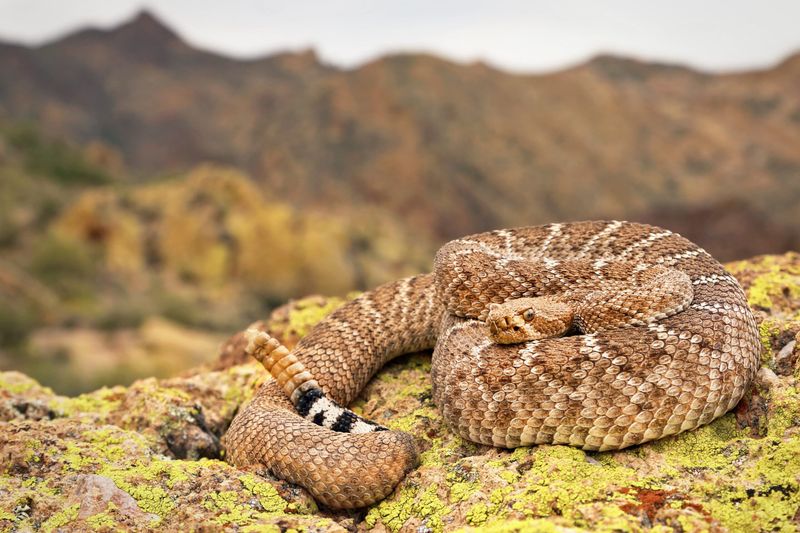
The Western Diamondback Rattlesnake is a venomous snake that roams the arid landscapes of the southwestern United States, particularly in Texas and Arizona. Its distinctive diamond pattern and rattling warning make it easily recognizable but no less dangerous.
This rattlesnake’s venom is potent, causing significant damage to tissue and red blood cells. Encounters are most common in wild areas, but they can also be found near homes that border desert regions. Quick and effective medical treatment is vital if bitten to prevent serious complications.
2. Black Mamba
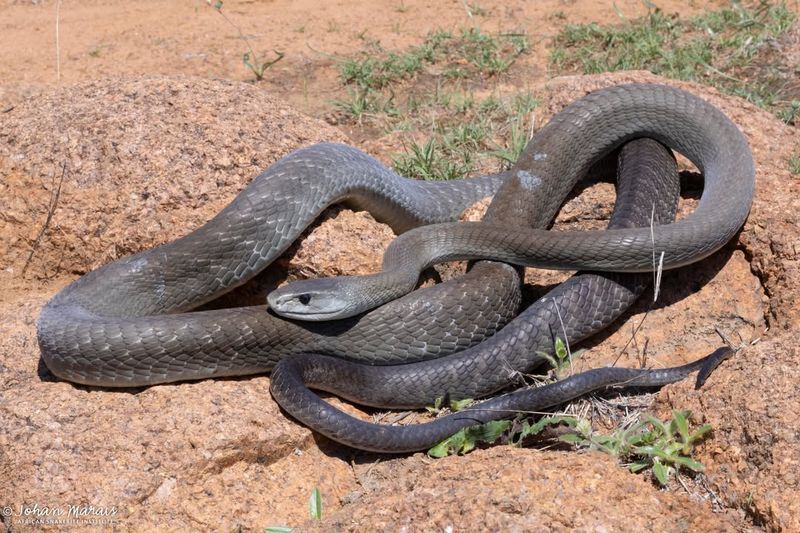
Among the most feared creatures, the Black Mamba stands out not just for its venom but its sheer speed. Found in the wild terrains, it can strike with lightning speed, making it a formidable predator.
Its venom can cause severe symptoms in a matter of minutes, necessitating immediate medical attention. Despite its notoriety, it usually avoids humans unless threatened.
If you encounter one, it’s crucial to keep your distance and back away slowly. Always remember, their reputation isn’t just folklore; it’s backed by their deadly capabilities.
3. American Copperhead

The American Copperhead, a prevalent venomous snake in the eastern United States, is known for its striking copper and tan banded appearance. These snakes inhabit wooded, rocky, and suburban environments, making them a frequent sight for outdoor enthusiasts.
Copperheads are generally not aggressive and prefer to rely on their camouflage to avoid detection. However, their bites can result in painful symptoms and require medical attention to prevent complications. While not as deadly as other venomous snakes, caution is still advised when in their territory.
4. Gila Monster
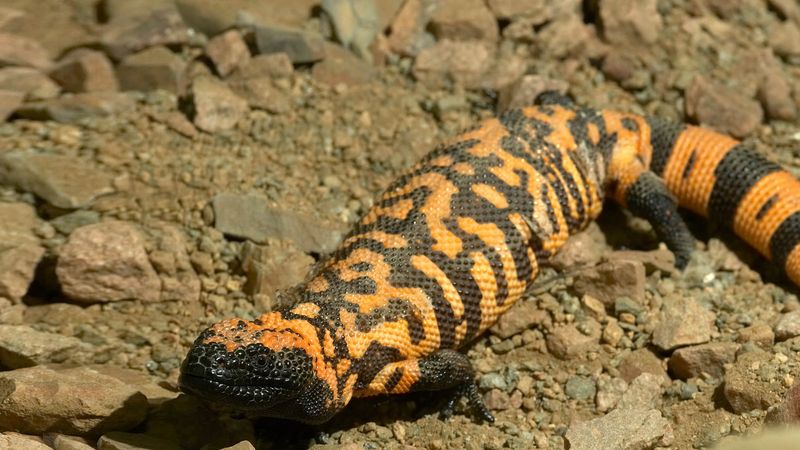
The Gila Monster, native to the southwestern United States, is one of the few venomous lizards in the world. Recognizable by its striking black and orange patterns, this lizard primarily inhabits desert regions in Arizona and Nevada.
Despite its venomous nature, the Gila Monster is relatively sluggish, often posing no direct threat to humans if left undisturbed.
5. Cottonmouth (Water Moccasin)

Known for its distinctive white mouth, the Cottonmouth or Water Moccasin is a venomous snake found in the southeastern United States. It thrives in aquatic environments like swamps, marshes, and slow-moving streams.
The Cottonmouth’s reputation for aggression is somewhat exaggerated; however, it is more likely to stand its ground when threatened compared to other snakes.
Their venom contains hemotoxins that can cause severe tissue damage, so caution is advised when in areas known to harbor these snakes.
6. Eastern Diamondback Rattlesnake
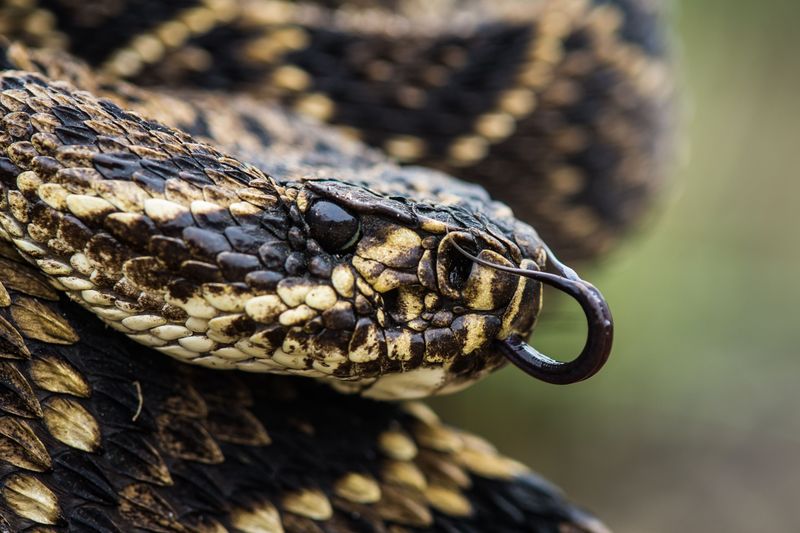
The Eastern Diamondback Rattlesnake is the largest venomous snake in North America, notorious for its potent venom and striking diamond pattern. This snake resides in the southeastern United States, particularly in Florida’s forests, coastal areas, and grasslands.
Its rattle serves as a warning to potential threats, a behavior that highlights its preference to avoid conflict whenever possible.
7. American Crocodile

The American Crocodile, while less aggressive than its African counterparts, is still one of America’s most dangerous reptiles. Found primarily in the coastal areas of southern Florida, this crocodile prefers brackish and saltwater habitats like mangroves and estuaries.
Their presence in popular tourist areas can lead to occasional encounters with humans. American Crocodiles are opportunistic hunters, feeding on fish, birds, and small mammals. Their powerful jaws and stealthy movements make them formidable predators.
8. American Alligator

The American Alligator is one of the most iconic reptiles in the United States, instantly recognizable by its massive size and formidable jaws. Commonly found in the southeastern states, particularly in Florida and Louisiana, these alligators inhabit freshwater environments like swamps, rivers, and lakes.
Despite their fearsome reputation, they usually avoid human interaction unless provoked or threatened. Alligators are apex predators, feeding on fish, birds, and mammals. However, their territorial nature can lead to unexpected encounters with humans.
9. Copperhead
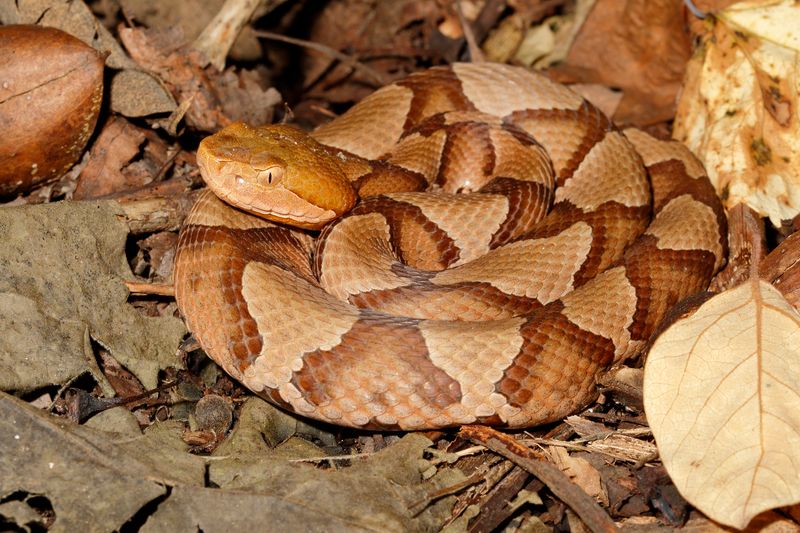
The Copperhead is a venomous snake found throughout the eastern United States, known for its distinctive copper-colored head and hourglass body pattern. It inhabits a variety of environments, including forests, fields, and suburban areas, making it one of the more commonly encountered venomous snakes.
While the Copperhead’s venom is less potent than that of other pit vipers, it can still cause significant pain and medical complications if bitten. These snakes rely heavily on their excellent camouflage to avoid threats, often remaining still when approached, which can lead to accidental encounters with humans.
10. Mojave Rattlesnake
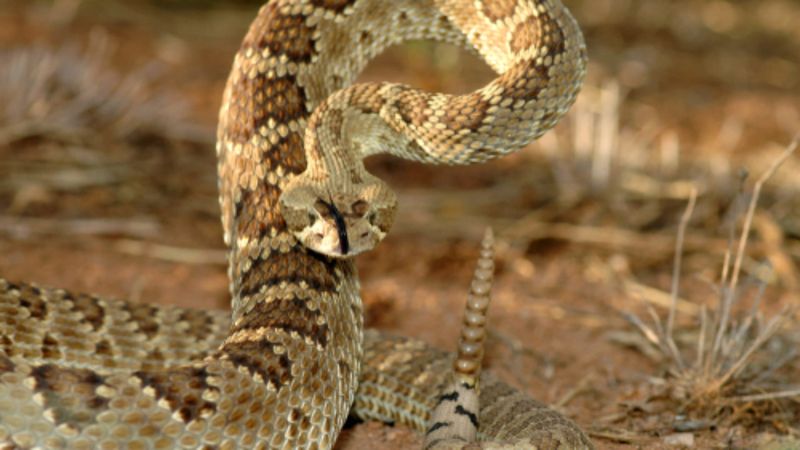
The Mojave Rattlesnake, found primarily in the southwestern United States, is considered one of the most venomous rattlesnakes. Its venom contains a potent mix of neurotoxins and hemotoxins, making it particularly dangerous.
The snake’s greenish hue helps it blend into the desert surroundings, making encounters quite sudden. This rattlesnake prefers arid, desert regions and is often encountered by hikers and campers. Its rattle serves as a warning, but its bite can be life-threatening if not treated promptly with antivenom.
11. Texas Coral Snake
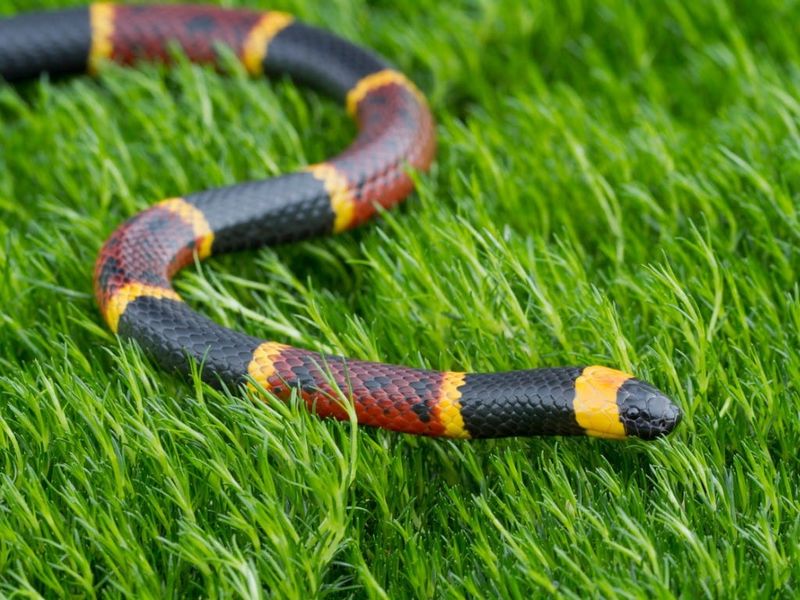
The Texas Coral Snake, with its vibrant red, yellow, and black banding, is a venomous snake found in the southern United States, particularly in Texas. This snake is often confused with non-venomous species due to its coloration, but its potent neurotoxic venom makes it a serious threat.
Texas Coral Snakes are elusive and typically shy, avoiding human contact whenever possible. However, their bites require prompt medical treatment due to the risk of respiratory failure. The rhyme “red touch yellow, kills a fellow” is a useful reminder to help identify this dangerous snake.
12. Northern Cottonmouth
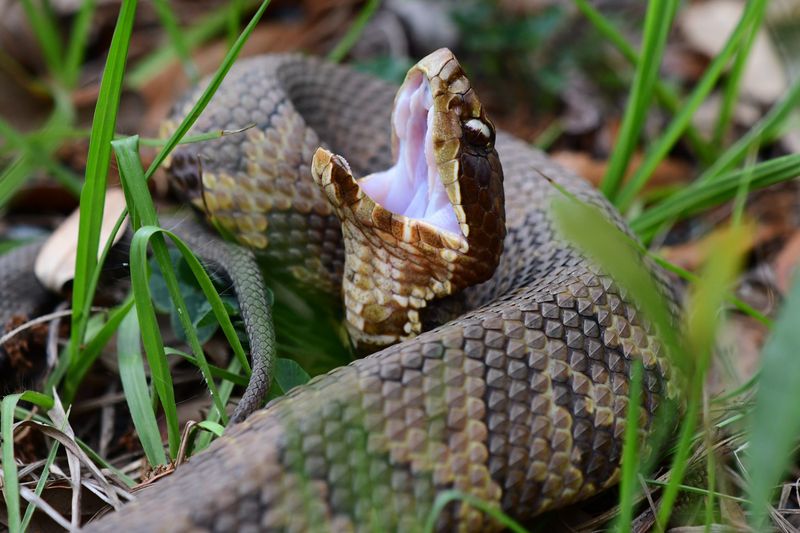
The Northern Cottonmouth, a subspecies of the Water Moccasin, is a venomous snake found in the southeastern United States. Like its southern relatives, it inhabits swamps, streams, and marshes, where it is often seen basking on logs or swimming in the water.
This snake’s defensive behavior and potent venom make it a formidable reptile. It will often display its characteristic white mouth as a warning sign when threatened. Their bites can lead to significant medical issues, and immediate attention is necessary to manage the effects of their hemotoxic venom.
13. Banded Krait
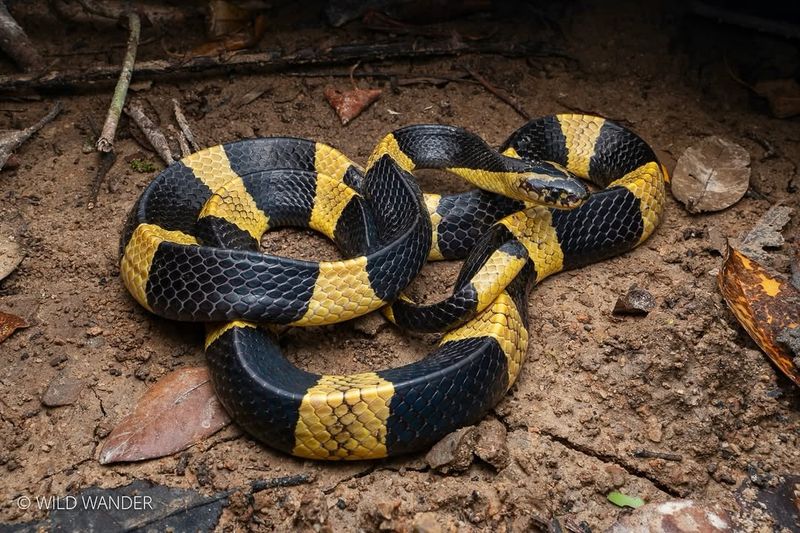
The Banded Krait, often overlooked in the realm of American reptiles, is an enigmatic serpent hailing from Southeast Asia. It’s famous for its striking black and yellow bands, which serve as a warning to potential predators. Despite its Asian origins, it occasionally appears in the U.S., perhaps due to the exotic pet trade.
This elusive snake sports a potent venom that can paralyze its prey, making it a formidable hunter. While human encounters are rare, caution is advised. Its habitat typically includes jungles and forests, where it moves stealthily through the undergrowth.




